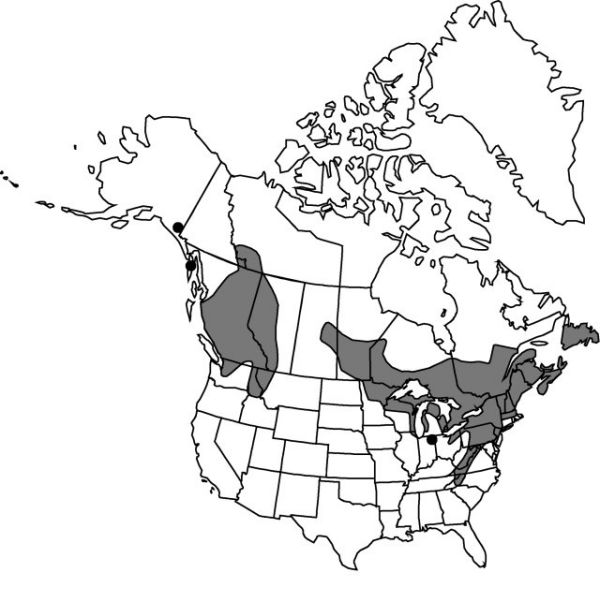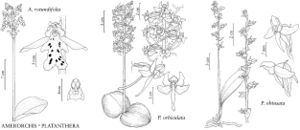Difference between revisions of "Platanthera orbiculata"
Gen. Sp. Orchid. Pl., 286. 1835.
FNA>Volume Importer |
imported>Volume Importer |
||
| (One intermediate revision by the same user not shown) | |||
| Line 6: | Line 6: | ||
|place=286. 1835 | |place=286. 1835 | ||
|year=1835 | |year=1835 | ||
| + | }} | ||
| + | |special_status={{Treatment/ID/Special_status | ||
| + | |code=F | ||
| + | |label=Illustrated | ||
| + | }}{{Treatment/ID/Special_status | ||
| + | |code=E | ||
| + | |label=Endemic | ||
}} | }} | ||
|basionyms={{Treatment/ID/Basionym | |basionyms={{Treatment/ID/Basionym | ||
| Line 68: | Line 75: | ||
|publication title=Gen. Sp. Orchid. Pl., | |publication title=Gen. Sp. Orchid. Pl., | ||
|publication year=1835 | |publication year=1835 | ||
| − | |special status= | + | |special status=Illustrated;Endemic |
| − | |source xml=https:// | + | |source xml=https://bitbucket.org/aafc-mbb/fna-data-curation/src/2e0870ddd59836b60bcf96646a41e87ea5a5943a/coarse_grained_fna_xml/V26/V26_1127.xml |
|subfamily=Orchidaceae subfam. Orchidoideae | |subfamily=Orchidaceae subfam. Orchidoideae | ||
|tribe=Orchidaceae tribe Orchideae | |tribe=Orchidaceae tribe Orchideae | ||
Latest revision as of 21:11, 5 November 2020
Plants 17–62 cm. Leaves 2, in subequal basal pair lying on ground; bracts (very rarely, 0–)1–6, scattered along stem; blade broadly elliptic to orbiculate or oblate, 5–21 × 3–22 cm. Spikes lax to dense. Flowers resupinate, rather showy; calyx mostly greenish white; corolla mostly white; lateral sepals reflexed to somewhat spreading; petals lanceolate-falcate, margins entire; lip descending to somewhat reflexed, linear-oblong to linear-lanceolate, without basal thickening, 7–17 × 1–2.5 mm, margins entire; spur slenderly clavate, 14–27 mm; rostellum lobes directed strongly forward, wide-spreading, angular; pollinaria nearly straight, 3–4.5(–4.8, very rarely) mm; pollinia remaining enclosed in anther sacs; viscidia orbiculate; ovary slender to rather stout, mostly 10–26 mm. 2n = 42.
Phenology: Flowering Jun–Aug(–Sep).
Habitat: Mesic to wet coniferous and deciduous forest, fen forest
Elevation: 0–1500 m
Distribution

Alta., B.C., Man., N.B., Nfld. and Labr. (Nfld.), N.W.T., N.S., Ont., P.E.I., Que., Sask., Alaska, Idaho, Ill., Ind., Maine, Md., Mass., Mich., Minn., Mont., Ohio, Oreg., Pa., N.H., N.J., N.Y., N.C., S.Dak., Tenn., Vt., Va., Wash., W.Va., Wis., Wyo.
Discussion
The key will permit determination of most specimens of Platanthera orbiculata and P. macrophylla. More precise discrimination of ambiguous specimens is possible by use of the formula from A. H. Reddoch and J. M. Reddoch (1993): spur length + (2 × pollinarium length), which for P. orbiculata is less than 38 and for P. macrophylla is equal to or greater than 38.
Considerable variation in size and shape of leaves occurs, and although to some extent regional in nature, intergradation is complete; recognition of infraspecific taxa is unwarranted. A few collections from isolated areas on the Pacific Coast of Canada are noteworthy, however. Those are small, few-flowered plants with rather narrow leaves borne alternately or suboppositely toward the base of the stem, as in some Asiatic species. They are in some respects very similar to Platanthera freynii Kränzlin, an Asiatic species distinguished primarily by its abruptly narrowed petals, in contrast to the generally broader, but variable, petals in North American plants. These western plants warrant further study to establish their identity and to elucidate relationships between North American and Asiatic species.
Selected References
None.
